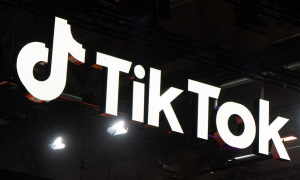Report: SDN landscape divided among fast-moving majority and cautious pragmatics
![]() The ability to provision network resources at the push of a bottom and upgrade the underlying infrastructure without worrying about compatibility issues may seem like a distant dream for practitioners today, but a new report suggests that programmable transport capacity is on a fast track to becoming enterprise reality.
The ability to provision network resources at the push of a bottom and upgrade the underlying infrastructure without worrying about compatibility issues may seem like a distant dream for practitioners today, but a new report suggests that programmable transport capacity is on a fast track to becoming enterprise reality.
In a survey of 400 North American technology leaders across the government, education, financial services and healthcare sectors, Juniper Networks Inc. has found that more than half of organizations, or 52.5 percent, plan to implement software-defined networking (SDN) in their environments. Even more surprising was that the majority of the respondents who said they intend to embrace the paradigm noted that they expect to do so within the next 12 months, which marks a stark departure from the sluggish pace of technology adoption that has historically characterized the networking world.
As Wikibon principal research contributor Stu Miniman observed in a 2013 paper, far less disruptive advancements could take a decade to pass the various standards committees and propagate through the market in the past. But the benefits of SDN are apparently too great to hold off. Juniper’s study reveals that IT leaders universally acknowledge the tremendous potential of the technology, yet remain divided on what the single biggest new opportunity is.
Topping the list was improved network performance and utilization with 26 percent of the vote, followed by simplified management at 19 percent and operational efficiencies and automation tied for third with 13 percent each. Meanwhile, 9 percent of the participants said that greater security is the most important advantage of SDN and 7 percent named reduced equipment costs as the biggest plus, placing hardware-related cost savings second from last only to the obligatory “Other” category, which accounted for the remaining 3 percent.
The poll indicates that SDN is well-recognized as a game changer for networking, but it also makes clear that most organizations still have a long way to go towards realizing the potential benefits in the field.
Just 27 percent of participants said that their companies are prepared or almost entirely prepared to adopt the technology, considerably less than the number of respondents who had earlier stated they intend to launch an SDN initiative in the foreseeable future. The education segment rose ahead of the pack in terms of readiness at 34 percent, while government trailed behind with just 13 percent of leaders belonging to the segment saying that their organizations are more or less set to make the transition. Another 38 percent of those polled gave their companies a “C” for software-defined networking preparedness, saying they are “somewhat” ready to implement the technology.
Cost remains the biggest barrier
The main barrier to adoption is cost, it turns out, with a full 50 percent of participants naming it as the biggest challenge. That aligns with the fact that 63 percent said they expect business networks will include a mix software-defined and legacy components in five years’ time, which underscores the cross-sector reluctance to jump into a costly “rip-and-replace” initiatives. Meanwhile, 35 percent of respondents named lack of integration with existing systems as the top barrier to adoption, while 34 percent pointed at security.
photo credit: subarcticmike via photopin cc
A message from John Furrier, co-founder of SiliconANGLE:
Your vote of support is important to us and it helps us keep the content FREE.
One click below supports our mission to provide free, deep, and relevant content.
Join our community on YouTube
Join the community that includes more than 15,000 #CubeAlumni experts, including Amazon.com CEO Andy Jassy, Dell Technologies founder and CEO Michael Dell, Intel CEO Pat Gelsinger, and many more luminaries and experts.
THANK YOU











